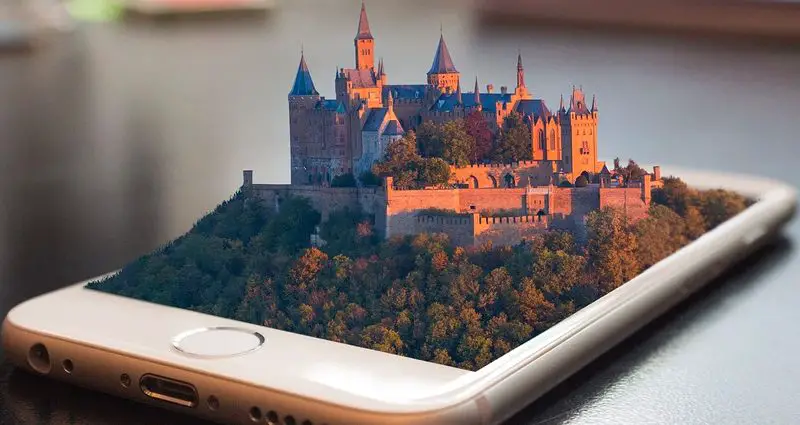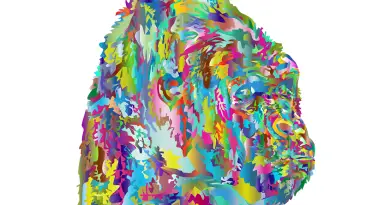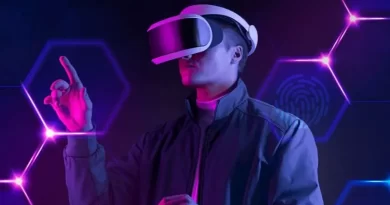What Is WebAR and How Can It Benefit Your Business
WebAR is an experience made possible by including digital components in a physical environment that is accessed through a web browser. The technology applies animated effects to real-world objects and the environment using sensors and computer vision.
Augmented reality (AR), a fantastic tool for client connection, provides a fascinating and engaging experience. In contrast, WebAR takes this engagement to a different level and enables you to grow your business like never before.
We interact with augmented reality (AR) without even realising it, whether we’re donning masks on Instagram and TikTok, looking for uncommon species in Pokemon GO, or using Google Street View to get where we’re going.
Through mobile applications, businesses have long since begun to use augmented reality technologies. People may be hesitant to waste time and storage on an app with so little utility, though. As a result, a large number of potential users pass up mobile AR experiences.
Web-based AR solves this problem by removing the need to decide whether or not to download an app in order to participate in virtual activities. The research predicts that by 2024, webAR will have a market capitalization of $21 billion, with 64% of iconic businesses having already made investments in the technology.
The concept of webAR will be thoroughly explored in this article, along with the technology that underpin it, its advantages and disadvantages, and the most significant application cases in a variety of industries.
How Does Web-Based Augmented Reality Function? What Is It?
WebAR is an experience made possible by including digital components in a physical environment that is accessed through a web browser. The technology applies animated effects to real-world objects and the environment using sensors and computer vision.
In more sophisticated solutions, a gyroscope, accelerometer, orientation tools, and magnetometer are also used.
Six degrees of freedom, camera stream, scene interpretation, and cloud-based CMS are crucial prerequisites for the effective application of webAR technology. Let’s examine each component in turn.
Six possible outcomes —
A 3D image needs to be in sync with the outside world. The ability to track three dimensions of position and orientation is crucial for the webAR solution.
The Camera Stream-
The field of view and perspective of the camera are used to synchronise two dimensions and provide augmented reality (AR) experience to a physical world.
Understanding the Scene-
To properly put virtual objects, the application needs to be aware of the environment’s surface and lighting characteristics.
Content Management System in the Cloud-
To engage users everywhere, at any time, webAR experiences should be available through a variety of triggers (such as QR codes or URLs).
Additionally, the browser must support the WebXR API in order to enable AR/VR content without the need for additional plugins or software to be installed.
How Do Webar and Mobilear Vary From One Another?
Web AR and mobile AR are conceptually similar, but they also have some key differences. The most significant difference has to do with how they operate; mobile AR solutions must be downloaded onto the device, whilst web versions work in browsers.
MobileAR provides more rich visuals and interactive features because it was designed with the traits of a specific platform in mind. However, a lot of individuals skip over these programmes because they don’t want to install them. The WebAR experience, on the other hand, may be accessed from any internet-connected device.
The price of mobile AR is another drawback. The cost of creating a fully functional application is high, especially when 3D animation is used. Incorporating all hardware capabilities, the notion nevertheless receives the best technical embodiment in such manner.
Mobile AR applications can also store some data locally, reducing their reliance entirely on an internet connection. WebAR, on the other hand, is totally dependent on internet access.
WebXR, WebVR, and WebAR
Other ideas exist besides web augmented reality, such as web virtual reality (webVR) and web extended reality (webXR). WebAR is already known to us, but what about the other two?
In contrast to webAR, which adds digital features to the physical environment, webVR transports you into a virtual environment. However, you need a device like Google Cardboard, Oculus Rift, or Samsung Gear VR to truly immerse yourself in this universe. There are numerous amazing webVR games, including Witch’s Brew, Up There, VRBlocks, and SpaceRocks, to mention a few.
WebAR and webVR are collectively referred to as webXR. When it combines the two, it is often frequently referred to as “mixed reality.”Obscura, Helicon, and Castle Builder are a few of the most noteworthy webXR initiatives.
How Is WebAR Built? A List of Common Frameworks
Many companies and developers are very interested in creating AR web applications to meet the needs of the 1.1 billion AR users worldwide. By doing this, businesses want to attract new clients and improve their connections with existing ones.
We have access to a number of webAR frameworks that enable us to create applications that are both engaging and high-performing: 8th Wall, XR.+, BlippAR, Banuba Face AR, and awe.
8th Wall
For creating AR experiences that work on both the web and mobile devices, consider 8th Wall. Six degrees of freedom, illumination estimation, and surface identification are some of the features of the framework. You can animate pictures, make amusing facial filters, and make 3D mini-games using 8th Wall.
A-Frame, three.js, Babylon.js, PlayCanvas, and Amazon Sumerian are just a few of the 3D JavaScript frameworks that are compatible with 8th Wall. There are 3.5 billion smartphones worldwide, both Android and iOS.
AR Banuba Face
A software development kit with a focus on face alterations is called Banuba Face AR. Face identification, hair and lip segmentation, and background segmentation are all part of the framework toolset. These tools let you experiment on virtual outfits, change backgrounds, and make changes to your appearance that look realistic.
Each feature in Banuba is available as an API, allowing you to use existing material or design your own effects. The most widely used browsers, Chrome, Firefox, and Safari, are supported by Banuba.
XR.+
XR.+ The augmented reality platform XR.+ provides a wide range of tools for the development of captivating webAR experiences. One or more 3D objects may be integrated using the solution. These objects can be animated or static; you can rotate, zoom in or out, and other actions. Products can be anchored to faces, hands, feet, and both horizontal and vertical surfaces with the help of XR.+. It instantly changes the materials and colours from one product to another.
The framework also offers one-click alpha blending and video backdrop removal. Traditional videos are therefore transformed into interactive events. All of the popular mobile browsers, including Chrome, Safari, Firefox, Samsung Internet, and Edge, are compatible with XR.+.
BlippAR
A framework called BlippAR transforms webAR for marketing efforts. It is a drag-and-drop editor with features like picture recognition and surface tracking. A published and viewable ready-to-use AR experience can be found anywhere on the internet and accessible using a QR code or URL.
Awe
You can build webAR content with the web-based drag and drop editor awe. Awe offers 360° scenes, gaze tracking, and a limitless amount of objects that may be added and animated per scene. The solution’s image identification and intuitive feature tracking make it ideal for digital masks and filters. Computers, Android, and iOS devices can all run Awe.




